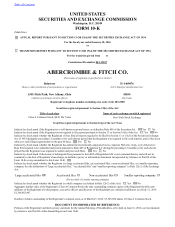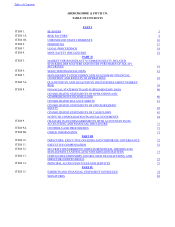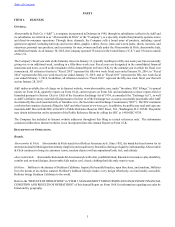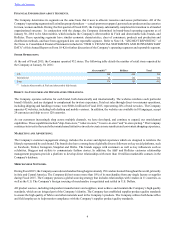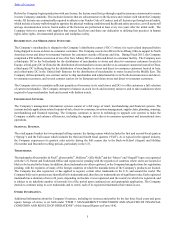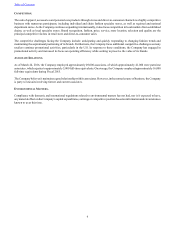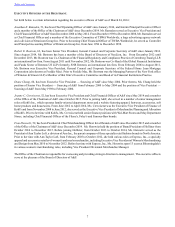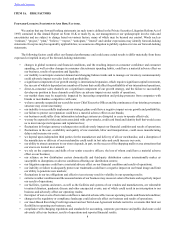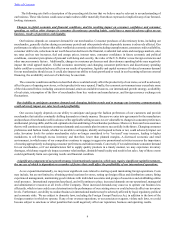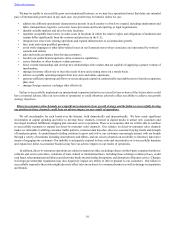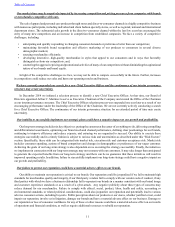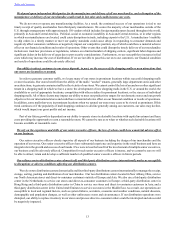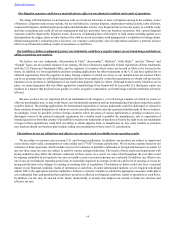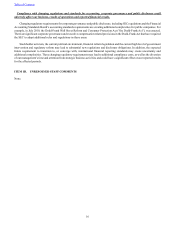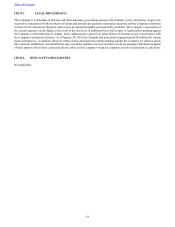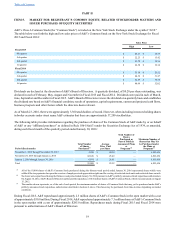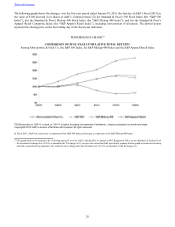Abercrombie & Fitch 2015 Annual Report Download - page 10
Download and view the complete annual report
Please find page 10 of the 2015 Abercrombie & Fitch annual report below. You can navigate through the pages in the report by either clicking on the pages listed below, or by using the keyword search tool below to find specific information within the annual report.
Table of Contents
10
We may be unable to successfully grow our international business, or we may face operational issues that delay our intended
pace of international growth and, in any such case, our growth may be limited, unless we can:
• address the different operational characteristics present in each country to which we expand, including employment and
labor, transportation, logistics, real estate, lease provisions and local reporting or legal requirements;
• identify suitable markets and sites for store locations;
• negotiate acceptable lease terms, in some cases in locations in which the relative rights and obligations of landlords and
tenants differ significantly from the customs and practices in the U.S.;
• integrate new stores into existing operations and expand infrastructure to accommodate growth;
• hire, train and retain qualified personnel;
• avoid work stoppages or other labor-related issues in our European stores where associates are represented by workers'
councils and unions;
• gain and retain acceptance from foreign customers;
• localize our online brand experience and e-commerce capabilities;
• secure franchise or other business venture partners;
• foster current relationships and develop new relationships with vendors that are capable of supplying a greater volume of
merchandise;
• manage inventory effectively to meet the needs of new and existing stores on a timely basis;
• achieve acceptable operating margins from new store and online operations;
• generate sufficient operating cash flows or secure adequate capital on commercially reasonable terms to fund our expansion
plan; and,
• manage foreign currency exchange risks effectively.
Failure to successfully implement our international expansion initiatives as a result of one or more of the factors above could
have a material adverse effect on our results of operations or could otherwise adversely affect our ability to achieve our growth
strategy objectives.
Direct-to-consumer sales channels are a significant component of our growth strategy, and the failure to successfully develop
our position in these channels could have an adverse impact on our results of operations.
We sell merchandise for each brand over the Internet, both domestically and internationally. We have made significant
investments in capital spending and labor to develop these channels, invested in digital media to attract new customers and
developed localized fulfillment, shipping and customer service operations. There is no assurance that we will be able to continue
to successfully maintain or expand our direct-to-consumer sales channels. Our reliance on direct-to-consumer sales channels
makes us vulnerable to shifting consumer traffic patterns, customer data breaches, direct-to-consumer buying trends and strength
of brand perception. As omnichannel retailing continues to grow and evolve, our customers increasingly interact with our brands
through a variety of mediums including smart phones and tablets, and our success depends on our ability to introduce innovative
means of engaging our customers. Our inability to adequately respond to these risks and uncertainties or to successfully maintain
and expand our direct-to-consumer business may have an adverse impact on our results of operations.
In addition, direct-to-consumer operations are subject to numerous risks, including reliance on third-party computer hardware/
software and service providers, violations of state, federal or international laws, including those relating to online privacy, credit
card fraud, telecommunication failures and electronic break-ins and similar disruptions, and disruption of Internet service. Changes
in foreign governmental regulations may also negatively impact our ability to deliver product to our customers. Our failure to
successfully respond to these risks might adversely affect sales in our direct-to-consumer business as well as damage our reputation
and brands.

